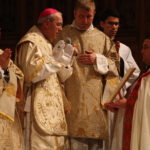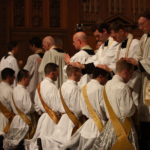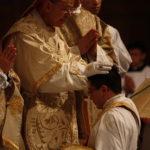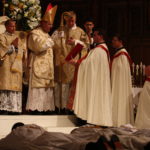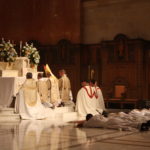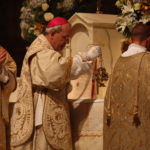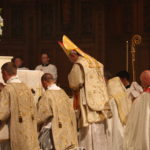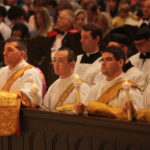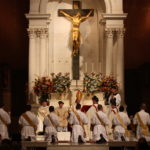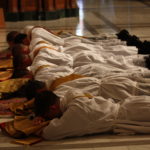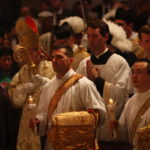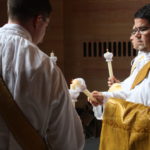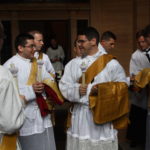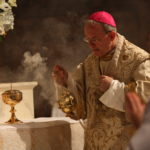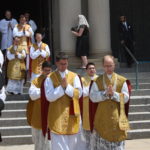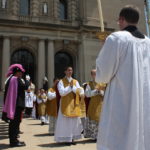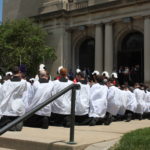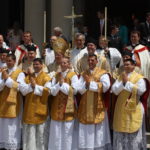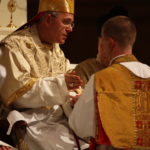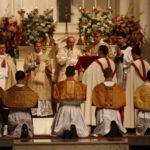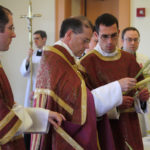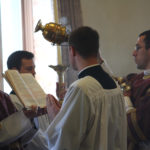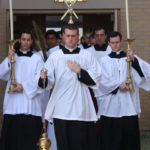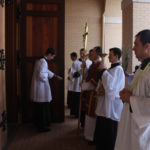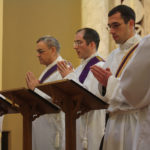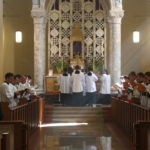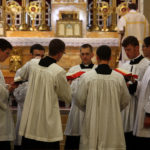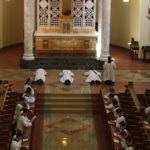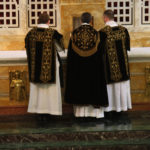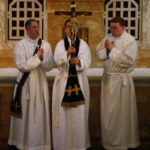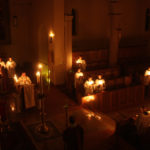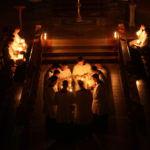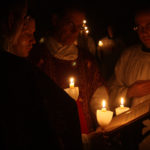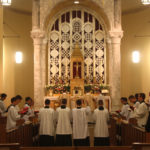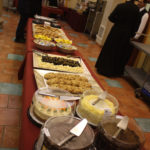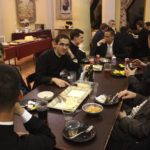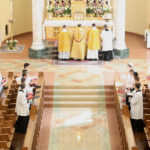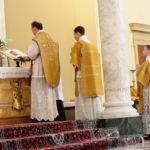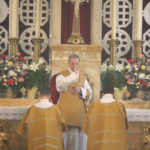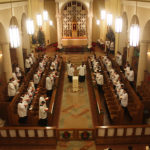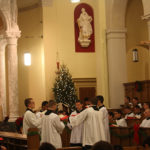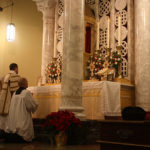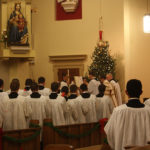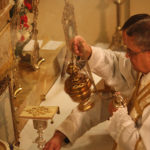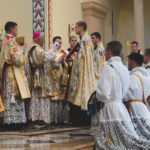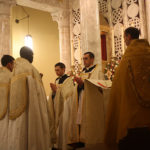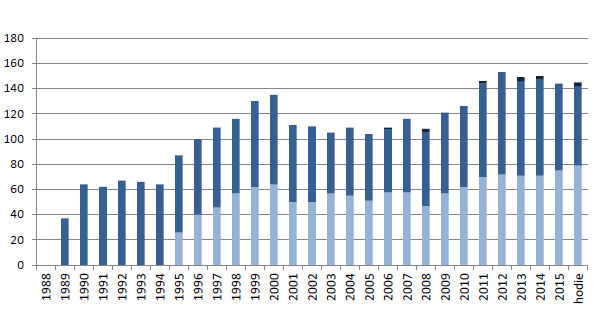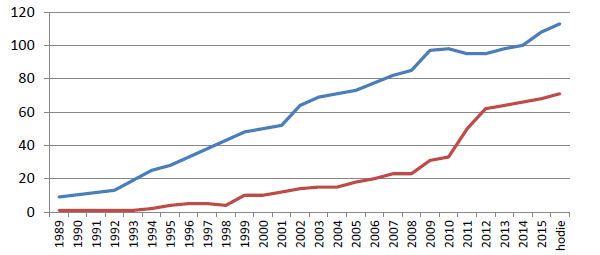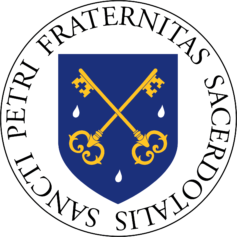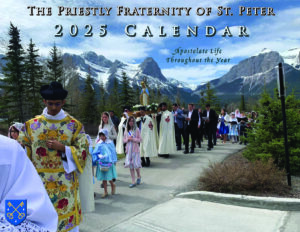Life at the Seminary
A gallery of snapshots of the life of the seminarians at Our Lady of Guadalupe Seminary through the liturgical year.
Ordinations 2014
Holy Week 2015
Christmas Mass 2015
January 21, 2016
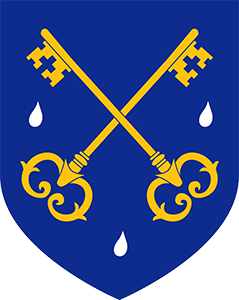
Christmas Mass and Solemn Vespers at the Seminary
The seminarians of Our Lady of Guadalupe Seminary entered the final week of the fall session observing the penitential observances of Advent, where they honored Our Lady with the Rorate Caeli Mass before dawn.
Fr. Joseph Bisig, FSSP, rector of the seminary, concluded the novena of Christmas Masses with the solemn high Midnight Mass of the Nativity, offered for the benefactors of the Fraternity. Fr. Gerard Saguto, FSSP, District Superior of North America, visited the seminary and while there led the Solemn Vespers of Christmas.
In your kindness, please keep the seminarians and priests of Our Lady of Guadalupe Seminary in your prayers as everyone enters the spring semester.

Midnight Mass at St. Michael’s in Scranton
The parishioners of Saint Michael’s were glad to welcome priests from the nearby FSSP district headquarters to the parish for the Midnight Mass of Christmas. Fr. Simon Harkins, FSSP, celebrated Mass assisted by Fr. Gregory Pendergraft, FSSP, as deacon and Fr. Jose Zepeda, FSSP, pastor of St. Michael’s, as subdeacon.
The celebration of Our Lord’s birth began with hymns and carols from the children’s choir. Enjoy images of the Nativity celebration.

Priestly Fraternity of St. Peter, by the Numbers
Dear Friends of the Fraternity,
With God’s help, your prayers and support continue to assist our Priestly Fraternity to move forward as we form and educate good and holy priests to expand our mission apostolate to the faithful! Please see below not only the very positive current statistics, but also the great indicator for the future – the many good men in our seminaries, who seek to discern and answer God’s call to work in His vineyard.
Current membership of the FSSP, as of October 24, 2015:
- Total: 421 (incl. 257 incardinated)
- Priests: 262
- 243 incardinated
- 11 incorporated ad annum
- 4 associated
- 4 postulants
- Deacons: 14
- Non-deacons seminarians
(including postulants): 145 - Average age of members: 37 years
- Deceased members: 8
Membership by Nationality:
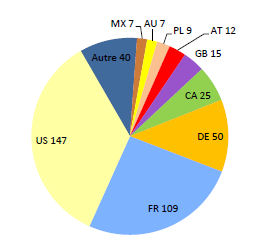
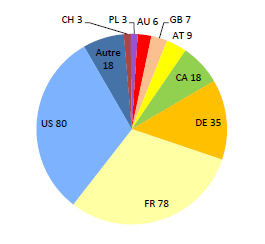
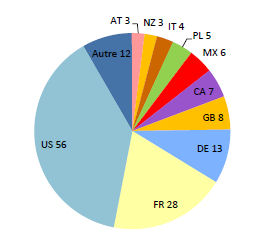
FSSP Membership Trends:
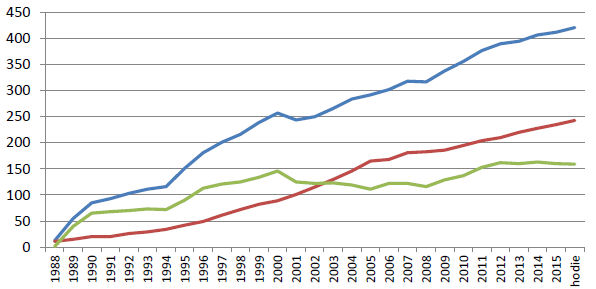
Confraternity of Saint Peter:
- Total members: 4961
- French speakers: 831
- German speakers: 821
- English speakers: 3309
Locations by Countries and Districts:
- Dioceses Served: 121
- Mass Locations: 219 locations
- Personal Parishes: 34
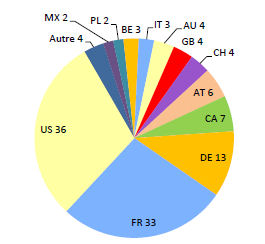
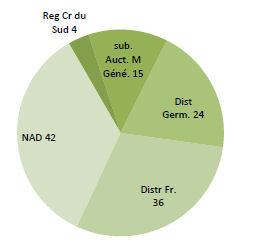
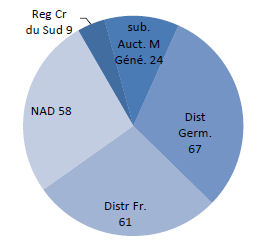
- Number of Houses: 113
- Number of Erected Houses: 71
[Source: General House of the FSSP, Switzerland]
December 9, 2015

Eucharistic Procession on the Virginia Beach Boardwalk
On Sunday, Oct 11, 2015, the priests of St Benedict’s Parish in Chesapeake participated in the annual Eucharistic Procession on the Virginia Beach Boardwalk to commemorate the miracle of the sun at Fatima in 1917.
Approximately 500 faithful from St. Benedict and local parishes participated. The event began with Exposition of the Blessed Sacrament and hymns, followed by the procession from Star of the Sea at 14th Street along the Virginia Beach Boardwalk to the 24th Street Park, where an altar was erected for Exposition and Adoration. A Rosary with the meditations of the Blessed Sacrament was prayed along the way.
Once at the altar of repose, Fr. Neal Nichols, FSSP, pastor of St. Benedict, was joined by assistant pastors Fr. David Nix and Fr. Anthony Forte, along with other priests of the area, in offering meditations on the message of Fatima with the need for reparation and adoration to God. After Benediction and the recitation of the Divine Praises, the procession returned to Star of the Sea while praying the remaining mysteries of the Rosary of the Blessed Sacrament, and singing traditional hymns.
Prayer and gratitude goes to all those that aided in the procession, especially the Most Rev. Francis DiLorenzo, Bishop of Richmond, Fr. Esteban DeLeon and the parishioners of Star of the Sea, and the parishioners of St. Benedict’s Catholic Church. Special thanks also to St. Joseph’s Men’s Guild, St. Anne’s Sodality, Knights of the Altar and the police and officials of Virginia Beach.
Most importantly, thanks were given to Our Blessed Mother by all who attended, for her intercession on such a beautiful day. More images follow.

Feast of All Saints at All Saints in Minneapolis
The Church of All Saints, our parish apostolate in Minneapolis, enjoyed the beauty of their newly renovated church as they commemorated their Patronal Feast. For the Solemn Mass of the day, the parish welcomed a recently ordained priest from the Diocese of Madison to celebrate the Holy Sacrifice of the Mass.
Fr. Christopher Gernetzke was assisted by Fr. Michael Malain, FSSP, as deacon, and Fr. Peter Bauknecht, FSSP, pastor of All Saints, as subdeacon. Enjoy pictures of the day, and the beautiful new interior of the parish. Many thanks to Tracy Dunne for the lovely images.
November 10, 2015

Bishop Bruskewitz Administers Tonsure to 11 Seminarians
The Priestly Fraternity of Saint Peter celebrated the admission of eleven new tonsurandi as members of the Fraternity. The Most Rev. Fabian Bruskewitz, Bishop Emeritus of Lincoln, traveled to Our Lady of Guadalupe Seminary on Saturday, October 24, 2015, to administer the Rite of Tonsure.
The Rite of Tonsure is administered early in the second year of formation, and is the point at which a seminarian ends his life in lay clothes and is invested with the cassock and surplice.
The 1911 Catholic Encyclopedia gives an excellent overview of the rite:
(From the Latin verb tondere, “to shear.”)
A sacred rite instituted by the Church by which a baptized and confirmed Christian is received into the clerical order by the shearing of his hair and the investment with the surplice. The person thus tonsured becomes a partaker of the common privileges and obligations of the clerical state and is prepared for the reception of orders. The tonsure itself is not an ordination properly so called, nor a true order. It is rather a simple ascription of a person to the Divine service in such things as are common to all clerics. Historically the tonsure was not in use in the primitive Church during the age of persecution. Even later, St. Jerome (in Ezech., xliv) disapproves of clerics shaving their heads. Indeed, among the Greeks and Romans such a custom was a badge of slavery. On this very account, the shaving of the head was adopted by the monks. Towards the end of the fifth, or beginning of the sixth, century, the custom passed over to the secular clergy.
As a sacred rite, the tonsure was originally joined to the first ordination received, as in the Greek Church it still is to the order of lector. In the Latin Church it began as a separate ceremony about the end of the seventh century, when parents offered their young sons to the service of God. Tonsure is to be given by a candidate’s ordinary, though mitred abbots can bestow it on their own subjects. No special age for its reception is prescribed, but the recipient must have learnt the rudiments of the Faith and be able to read and write. The ceremony may be performed at any time or place. … According to canon law, all clerics are bound to wear the tonsure under certain penalties. But on this subject, Taunton (loc. cit. inf.) says: “In English-speaking countries, from a custom arising in the days of persecution and having a prescription of over three centuries, the shaving of the head, the priestly crown, seems, with the tacit consent of the Holy See, to have passed out of use. No provincial or national council has ordered it, even when treating of clerical dress; and the Holy See has not inserted the law when correcting the decrees of those councils.”
Many thanks to Bishop Bruskewitz for his time and support of the Fraternity of Saint Peter. Look for further coverage and pictures in the next Fraternity Newsletter. If you do not receive the newsletter, please sign up today.
In your kindness, please pray for our new tonsured seminarians, and for all of our postulants, seminarians, sub-deacons, deacons, and priests. Enjoy pictures of the day.
October 26, 2015

Mass Upon the Top of Africa
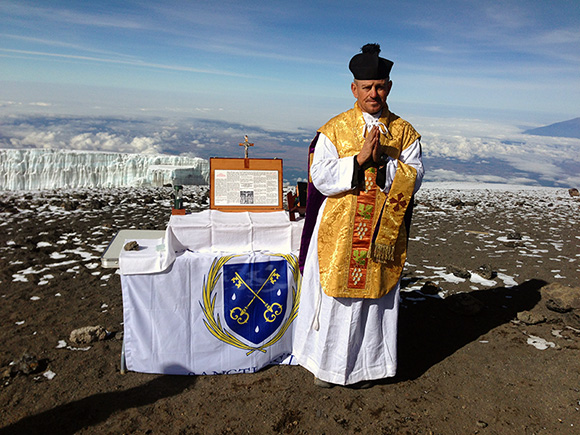
Fr. Antony Sumich, FSSP, chaplain of our Calgary apostolate, and Fr. Gregory Bartholomew, FSSP, currently stationed at Christ the King in Sarasota, recently ventured to Africa. There they traveled to Tanzania, where they ascended Mount Kilimanjaro – the highest point on the continent.
Once there, both offered the Most Holy Sacrifice of the Mass. What follows is Fr. Sumich’s account of the day:
Pax Christi,
This (pictured above) is where I said Mass on Wednesday, 30th September 2015.
The top of Kilimanjaro is nearly 6,000 metres (19,341 feet) above sea level.
Needless to say, it was a little hard to breathe after the 7-½ hours it took to walk up there! But mainly the difficulty breathing was from the altitude.
The table I used, and the altar and Mass vestments, etc., were carried up by our porters. One of them (who we gave the name “table-guy”) literally carried a table strapped on his back the whole way up. After my Mass, Fr. Gregory Bartholomew said his Mass also.
We prayed a lot, and our porters & guides joined us in daily Mass, and prayers for good weather. Our prayers were answered and the temperature stayed at about +5 C deg (low 40s F), there was no wind whatsoever (very rare) during the two hours we spent at the top.
The Mass was attended by a number of Tanzanian guides who were so happy to see Our Blessed Lord physically on top of Africa.
October 6, 2015


